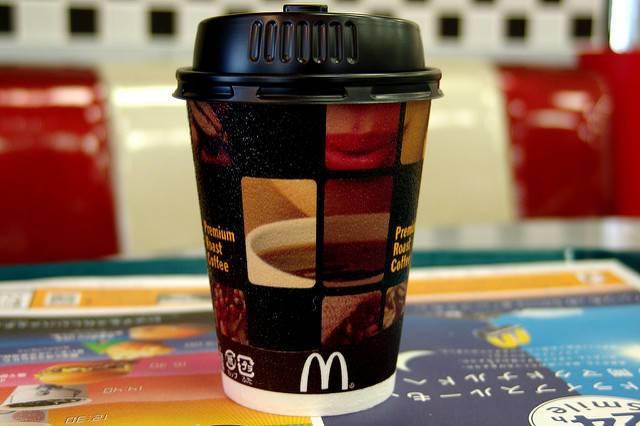
McDonald’s has come a long way since those infamous Styrofoam clamshell containers of a generation ago.
The world’s largest fast food company announced this week that by 2025, all of its packaging will be made from recycled, renewable or certified sources. McDonald’s was short on specifics, but it said Forest Stewardship Council (FSC) certification will be the preferred standard for such materials; by 2020, the company has pledged that all of its fiber-based packaging will either be recycled or certified and not have any ties to deforestation.
Currently, McDonald’s claims that half of its consumer packaging is made out of recycled, renewable or certified materials, while 64 percent of its fiber-based packaging is derived from certified or recycled sourcing. Worldwide, the company says 10 percent of its restaurants are recycling food packaging.
Critics of the company will question why it has to take so long for all of McDonald’s 37,000 locations across to globe to move away from packaging made from virgin or non-traceable materials. In fairness, however, the company will have plenty of work within its supply chain to ensure this promise becomes a reality. Moreover, McDonald’s will also have to gingerly cajole franchisees who may not necessarily buy into this shift at first.
Long seen as the poster child of excesses such as processed food and factory farming, McDonald’s has undergone a slow but steady transformation in recent years. Its changes have included just about every trend imaginable, from cage-free eggs to organic beef and even a “natural” makeover for its Chicken McNuggets.
The Illinois-based burger giant really had no choice, as in recent years it had flailed along with other fast-food chains as younger consumers flocked to more “ethical” alternatives such as Chipotle (of which McDonald’s was an early investor), Panera Bread and sweetgreen.
But in recent months, McDonald’s has been on the rebound, buoyed by several strategic decisions that panned out well for the company, from its launch of the all-day breakfast menu to selling off many company-owned stores to franchisees. It also has not hurt that the company has long ditched the drab mansard roofed restaurants that over the years, became rank on the inside and outside appeared as eyesores from the road. Now many locations open, airy and are actually inviting inside, rather than a place out of which one wants to rush as soon as possible.
The road to improved waste diversion has been a long one for McDonald’s, dating back to a partnership with the Environmental Defense Fund (EDF) that started in 1990. Consumer outrage back then over the company’s wasteful packaging led to the use of more recycled materials, less fiber in items such as napkins and the unbleached paper bags that have long been standard at its restaurants. EDF claims that this partnership alone reduced McDonald’s volume of sandwich packaging by up to 90 percent; and as a reminder how hard it can be for a company to change, the NGO has said the shift from foam to paper coffee cups took 23 years.
Now, almost 30 years later, the Golden Arches are primed to make another big step, which could make the chain almost recognizable from the time of our parents and grandparents.
Finally, the lesson learned here reaches far beyond McDonald’s; The company is a case study of how partnerships with NGOs can work and drive change within an industry. For companies, their brand reputation can improve. And NGOs can find success as they realize starting out and winning half of what they wanted, rather than engaging in a zero-sum game where no progress occurs at all.
Image credit: Miki Yoshihito/Flickr

Leon Kaye has written for 3p since 2010 and become executive editor in 2018. His previous work includes writing for the Guardian as well as other online and print publications. In addition, he's worked in sales executive roles within technology and financial research companies, as well as for a public relations firm, for which he consulted with one of the globe’s leading sustainability initiatives. Currently living in Central California, he’s traveled to 70-plus countries and has lived and worked in South Korea, the United Arab Emirates and Uruguay.
Leon’s an alum of Fresno State, the University of Maryland, Baltimore County and the University of Southern California's Marshall Business School. He enjoys traveling abroad as well as exploring California’s Central Coast and the Sierra Nevadas.














